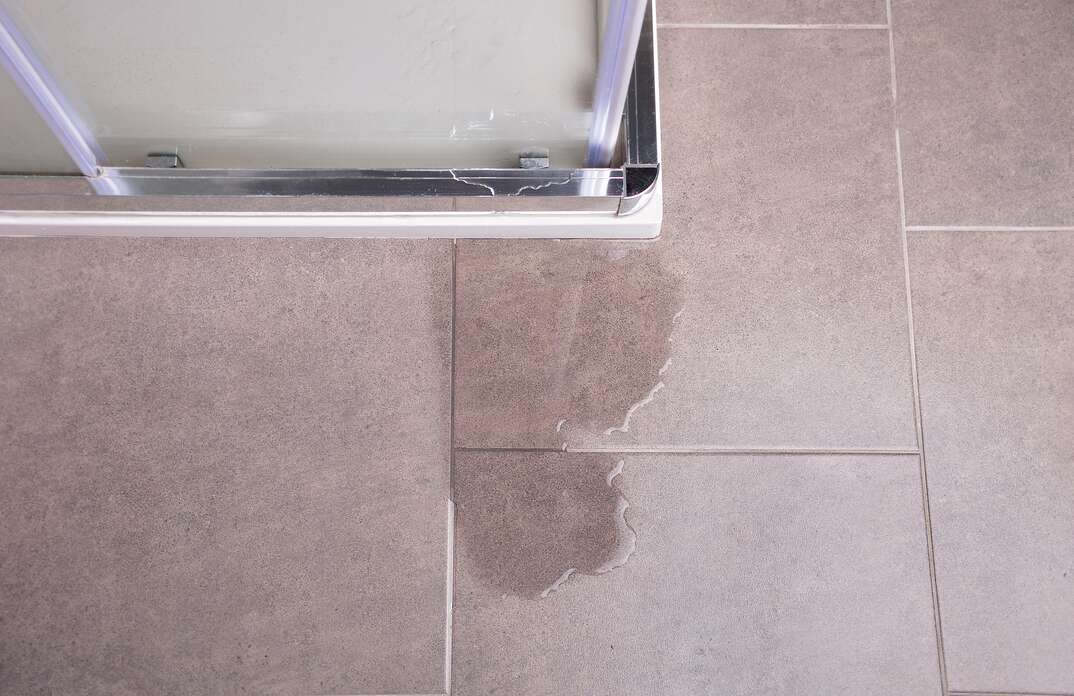Why Is My Shower Leaking?

Nothing brings your steamy, hot, relaxing shower to a screeching halt faster than a leak. Some shower leaks are annoying yet obvious, such as a constant drip from your shower head. Others are more insidious — like shower pipes leaking behind the wall or the shower base leaking into the floor.
Find out common causes of a leaking shower and what you can do about it to keep water damage to a minimum.
What Is the Most Common Cause of a Leaking Shower?
Why is your shower leaking? The most common cause is a faulty or worn part somewhere in the shower, but leaks can happen in several places. A leaking shower often happens over time as things wear away. Some possible locations and causes of shower leaks include:
- Shower liner or tray: A poor seal or any type of damage, such as cracks in your shower liner or tray, can allow water to seep through to the materials underneath and cause damage.
- Shower head: If the dripping is coming from above, your shower head could have a worn or damaged cartridge that's letting the water leak. You could also have a poor connection if the water leaks from the base of the shower head.
- Grout or caulk: Tile showers can leak if you have missing or damaged grout that lets the water seep through. If your shower has damaged caulk, the water can leak there, too.
- Pipe leaks: Water supply leaks can happen anywhere, including behind the walls. This can happen if the water supply line is damaged or isn't installed correctly.
- Faucet: Your shower faucet could drip or leak incessantly if it has a damaged washer, O-ring or gasket.
- Drain gasket: A gasket under your shower drain helps create a seal in that area. Damage to that gasket can allow leaks around the drain.
Some shower leaks are easier to find than others. You can see and hear the drips continuing in leaking shower heads and faucets after you shut off the shower.
If it's not coming from those areas, pay attention to where you see the moisture. If you see water on the floor outside your shower, it could be the shower tray that's leaking. You can test the shower tray by blocking the drain and filling the shower with several inches of water — enough to fill it without it overflowing. Then, wait several hours to see if the water level goes down.
You might be able to get an idea of where the leak is coming from based on where you see water damage. For instance, if you have a second-floor bathroom, pay attention to where you see water damage on the ceiling below. If it's near where the water supply lines would run to the shower, that could be the source. Keep in mind that leaking water can travel before it causes water damage on walls or ceilings, so that's not always an accurate test.
If you can't easily identify the source of the leak, call a plumber for a professional opinion. They know how to locate leaks and can handle the repairs for you.
More Related Articles:
- Calling a Plumber? Here Are the 6 Most Common Plumbing Jobs and How Much They Cost
- 6 Ways to Try to Unclog Your Sink Before You Call a Plumber
- What's in My Plumber's Van?
- Here's How Much It Costs to Remodel a Bathroom
- 6 Tips for Hiring a Plumber
How to Fix a Leaking Shower
The repair depends on the source of the leaking. Replacing parts on a leaky faucet or shower head can solve the problem there. You can also replace the whole thing if you're due for a new one anyway. This is often a job that a handy homeowner can do themselves, but you can also hire a plumber if you don't want to deal with the hassle.
If the issue is your grout, caulk or shower tray seal, you'll need to replace it to seal up the holes. However, there could be water damage to the materials underneath, so you might need to have that damage repaired first. This is often an involved job that you might want to leave to a professional. You can also have a new gasket installed on the drain to give it a good seal.
The fix becomes more complicated if your shower is leaking from the supply lines, especially if they're hidden behind the walls. You'll need to open up the walls to reach the pipes if you don't have an access panel. This is typically a job that's best left to a plumber. They can find the specific location of the leak and figure out why the pipes are leaking. They also know how to choose the correct type of replacement pipe and install it correctly.
Elocal Editorial Content is for educational and entertainment purposes only. Editorial Content should not be used as a substitute for advice from a licensed professional in your state reviewing your issue. Systems, equipment, issues and circumstances vary. Follow the manufacturer's safety precautions. The opinions, beliefs and viewpoints expressed by the eLocal Editorial Team and other third-party content providers do not necessarily reflect the opinions, beliefs and viewpoints of eLocal or its affiliate companies. Use of the Blog is subject to the
Website Terms and Conditions.The eLocal Editorial Team operates independently of eLocal USA's marketing and sales decisions.



